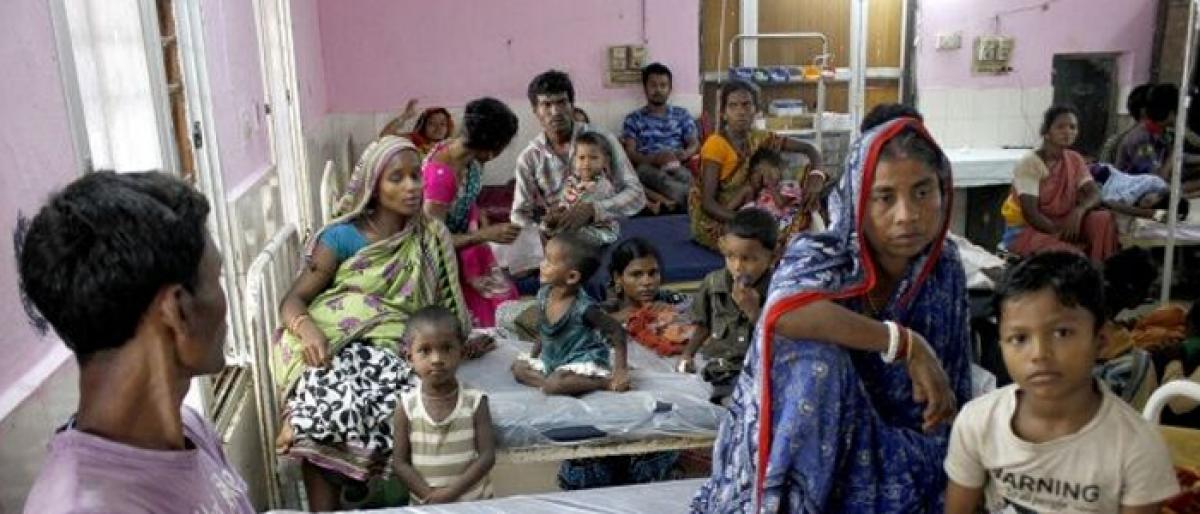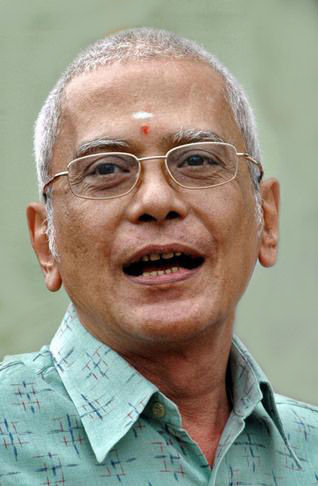Live
- GMR Airports Unveils AI-Powered Digital Twin Platform to Transform Airport Operations
- India poised to become leading maritime player: PM Modi
- Top Causes of Kidney Stones and How to Recognize Silent Symptoms
- India’s renewable energy capacity logs 14.2 pc growth at 213.7 GW
- Winter Session of Odisha Assembly adjourned sine die
- Biden calls Trump's tariff approach 'major mistake'
- After Drama Over Eknath Shinde’s Chief Minister Race, Maharashtra Cabinet Formation Faces New Tensions
- Egyptian FM, Blinken discuss recent developments in Syria
- Iran's supreme leader says Syria's developments result of US-Israeli 'plot'
- Elon Musk to Purchase $100 Million Luxury Mansion Next to Donald Trump's Mar-a-Lago, Report Reveals
Just In

Welfare programmes of governments of most countries in the world are usually centered around education and health Even in the most developed countries, a large portion of the population is covered by free health services and subsidised education, up to a level In India, largely, on account of the size of the population, the government is slowly withdrawing from these sectors owing to the high co
Welfare programmes of governments of most countries in the world are usually centered around education and health. Even in the most developed countries, a large portion of the population is covered by free health services and subsidised education, up to a level. In India, largely, on account of the size of the population, the government is slowly withdrawing from these sectors owing to the high cost involved. Time was when one had no option but to go to government hospitals, no matter what one’s economic status was.
With the passage of time, however, corporate hospitals came to stay, and those who could afford their prices went to them. As a result, governments have begun to neglect the hospitals under their control. Budgets have been slashed and even the few medicines that used to be purchased in the past are not being procured any longer. Consequently, doctors who, in earlier days, joined government hospitals with a view to serving the needy, started joining private institutions.
Middle-class people have also begun to prefer private hospitals for treatment, even if it means having to borrow to meet the additional expenditure. Since the well-to-do, as well as the vocal middle-class, have turned away from them, hospitals under the Central and State governments are languishing for want of attention.
It is, thus, only the poorest of the poor, who lack the ability to voice their grievances against the quality of treatment they get who are now patronising government hospitals, which are able to get away with the shoddiest of attention to the patients, partly on account of shortage of funds and also because of lax supervision. While hospitals in towns still get some funding of sorts, the Primary Health Centres in rural areas remain in a state of total neglect, bereft of doctors, equipment or medicines.
Somewhat similar is the situation in respect of the education sector. There was a time when people had no alternative to studying in government schools. Private institutions, no doubt, existed, but they lacked the glitz and glamour which characterise them now. With the advent of the convents, the rich sections of people patronised them. With the passage of time, the corporate sector has penetrated the field of education with a publicity blitz, until we have now reached a stage where middle class is prepared to beg, borrow or steal, to put their children in private schools, completely ignoring government schools.
Over a period of time, therefore, a clear schism has come to be, between the corporate sector and the government, in respect of educational institutions and hospitals in the country. The latter is perceived as being meant only for the poorer sections of society. Owing to the absence of the middle class and the affluent among students, a few questions are raised about the conditions or the quality of instruction and there is little control over absenteeism on the part of teachers. Especially in villages, it is common to find that teachers posted in the schools continue to live in towns and send proxies on their behalf to attend to their duties. The schools continue to lack basic facilities such as toilets, teaching material etc and are generally in a state of utter neglect.
The poorer sections of the society have, in recent times, realised the importance of education and started sending their wards to government schools. But, because of the diminishing quality of education in them, they are making their children drop out and sending them to work. The only method to remedy this sad situation is to encourage the middle class to send their children also to these schools. The government, on the other hand, has chosen the strange alternative of closing down the institutions altogether, claiming that they have become unviable!
The steep increase in the cost of health and medical services has caused considerable distress to the people belonging to the low-income groups and to mitigate it, schemes like ‘Arogyasri’ programme are introduced. Whatever be the merits of the scheme, the Primary Health Centres are being starved in the process.
In the education sector also, the government, through fee reimbursement programme, is meeting the expenditure of certain sections of pupils studying in corporate colleges. And, as in the case of the corporate hospitals, there are allegations of grave irregularities in respect of implementation of the scheme.
As a result, like PHCs, government colleges are being left high and dry on account of the diversion of funds to corporate institutions. It should be remembered that medicare requirements of people arise intermittently, and for short periods, whereas education takes at least 10 years. That being the case, it is difficult to sympathise with the hurry the government is showing to shut down government schools and to cut down assistance to those that are left, leaving the students no option to believe that the corporate institutions are their only choice. The intriguing aspect is that the same government, which is turning a blind eye to the observations of the supervising agencies of the central government in regard to the woeful lack of fundamental facilities in corporate institutions, is quite willing to close down its own institutions on the same grounds!
The unfolding scenario following the neglect of the education institutions in the government sector is quite disturbing indeed. 70 years down the road after Independence, the adult literacy rate in the country is a mere 72%. It is certain to go down further. And illiteracy will lead to social evils rearing their heads and neutralizing the benefits accruing to society through the social welfare measures undertaken by the government.
It is therefore necessary that government educational institutions must be restored to their original status and glory. If this is to happen, they must be made to run satisfactorily. But the government is strapped of funds. No change will take place so long as the government continues to treat education as a commercial venture subject to the considerations of profit and loss. What then is the solution?
The Central government introduced the concept of corporate social responsibility (CSR) in 2014. According to the Act, all corporates have to spend 2% of their average profit in the three previous years on social welfare activities. As a result, some of the institutions are helping the education sector, mostly in the form of scholarships. It would probably be better for the government to suggest to them to take over the responsibility of managing educational stations under the government.
With its well-honed skills in management, the private sector will certainly be able to find effective solutions to the problem of making those institutions viable. After all, these institutions have large amounts of land which can be used as capital to leverage institutional assistance and fund the requirements of development and growth. Even if the arrangement were to prove marginally unprofitable, the corporates will be left with the satisfaction that the requirements of compliance with the CSR regime have been met.
Similar changes need to be made in the income tax dispensation also so that corporates can book losses incurred on account of management of government institutions taken over by them under the requirement of compliance CSR. Then it is possible that smaller corporates and even individuals may come forward to take over the management of government institutions. Such a policy environment will certainly conduce to the prevention of closure of schools.
An improved regulatory regime will enhance the quality of supervision and ensure that the required facilities are made available in institutions belonging to the government and taken over by the corporate sector. This will pave the way for the middle class to feel encouraged to send their children to these institutions. Needless to say, expenditure on account of education being incurred by the middle classes today will be substantially reduced as a result. Not only will the middle classes become more economically stable, but the society as a whole will benefit.

© 2024 Hyderabad Media House Limited/The Hans India. All rights reserved. Powered by hocalwire.com







